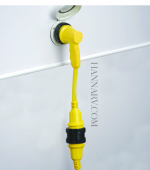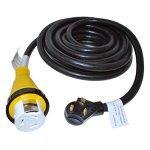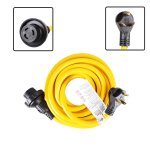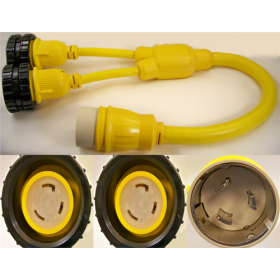What cmetzenberg experienced is not typical of Marinco plug failures. I suspect that his failure was also due to arcing, and perhaps not a good connection on the land side. The typical Marinco failure is at the inlet to the boat. Also this is a 15 amp connector, with no support. I don't know amount of power in this case, but a water heater takes 1500 watts, or close to 15 amps. Add in any small heater even on low, and the circuit is overloaded. 15 amp circuits should be on 15 amp circuit breakers. But many house circuits are on 20 to 30 amp breakers.
The "secret" of any 110/220 connector on a boat is inspection, tear down and then as Tom suggests, re do if there is any evidence of corrosion, over heating or arcing.
The standard 110 V 15 amp plug as illustrated is a poor plug for out door applications. It is not supported, and can be pulled partly loose easily.
The Twist lock, Marinco 3 spade 30 amp plug, properly using the barrel support which screws onto the outside of the boat outlet, and the cord gives it good support. Unfortunately very few people use the plug properly, and as Tom suggests use dielectric grease.
Below is a inlet properly supported.
The plug to the shore side connector--and barrel connector properly done
 Never plug in any of the boat cords with out tripping the shorepower/boat breakers. This way, you don't arc the plug when you connect it. The support of both ends of the cord is critical.
Never plug in any of the boat cords with out tripping the shorepower/boat breakers. This way, you don't arc the plug when you connect it. The support of both ends of the cord is critical.
I agree with the 30 amp connectors--and I have several of those by my dock (with appropriate wiring and breakers for 2 legs of 30 amps 110 v each. Be sure and support the cable. Just the "spade twist lock" is not enough.
The problem with the Hubble type 1 socket shown in the link is that you have to use the corresponding Hubble type one plug, with plastic lugs to support. These are not found at most marinas. So the Marinco type of attachment, with screw collar is better. If you want to stick with Marinco fittings, instead of Smart Plugs.






